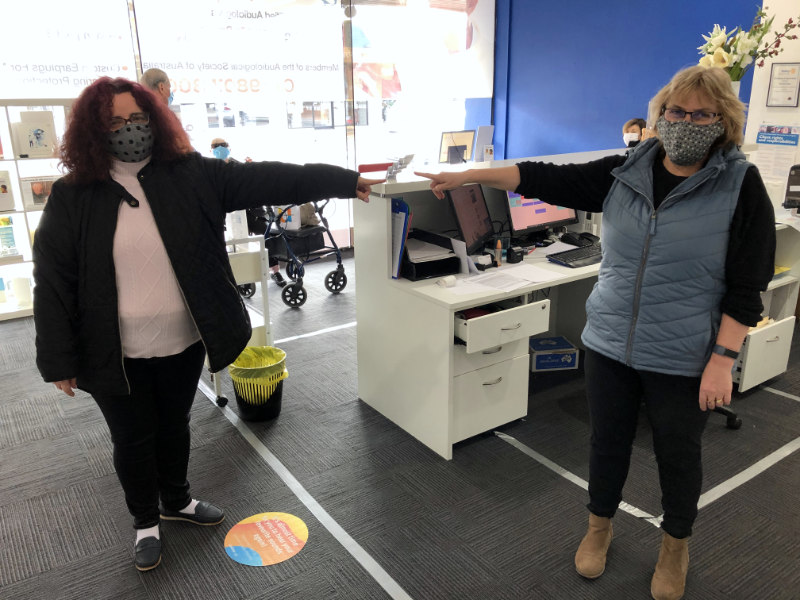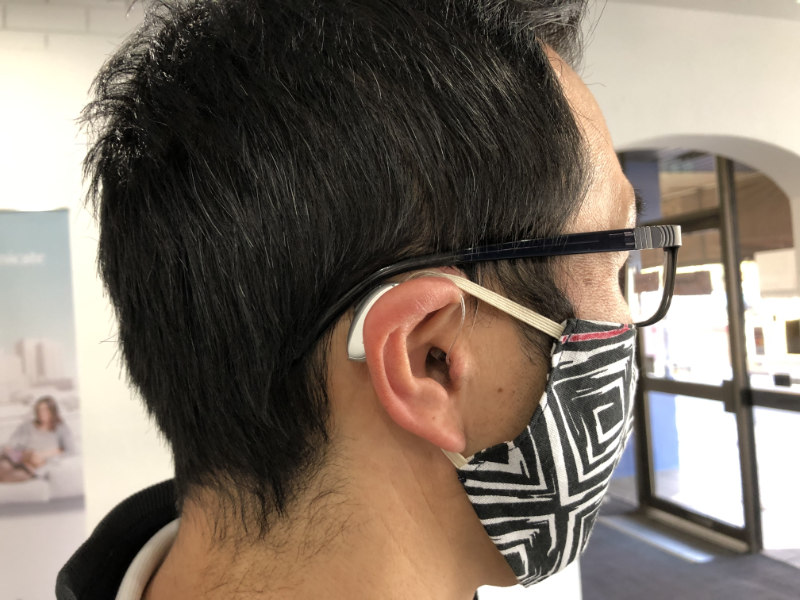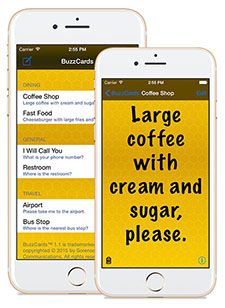
Managing Hearing Loss in the Time of COVID-19
Frequent handwashing, hand sanitiser use and not touching your face were the early health and safety directives as the COVID-19 pandemic spread.
Then physical distancing was introduced and now, in Melbourne, the mandatory use of face masks are the next tools in helping to stop the spread of the coronavirus.
Both present challenges for those with hearing loss. The Hearing Health Foundation sent out a recent two-question survey asking about the challenges regarding hearing and hearing loss at this time.

Among the 625 responses, an overwhelming 87 percent were experiencing difficulty communicating. Within this group, 85 percent cited the inability to read lips as a problem.
Many added that being able to hear from a distance while the speaker is wearing a face mask makes things really difficult. Not being able to read lips or facial expressions puts everyone at a disadvantage when communicating. In addition, feeling isolated is already not uncommon among those with hearing loss and the directive to stay at home cuts off social connection.
Add to this the obvious difficulty of fitting mask elastics, hearing devices, and often also glasses in the limited space behind the ear—plus the stress of just staying safe and healthy in the midst of a highly transmissible, deadly disease—and what emerges is a perfect storm of issues for those living with hearing loss and using hearing devices.
The Hearing Health Foundation collected comments and tips from their community who, despite the various challenges at this time, seem to be extremely resourceful and resilient.
Masks
- “Instead of elastics behind the ears, I use a mask with ties. Some people wear a baseball cap and sew buttons near their ears. Instead of putting the elastic behind the ears, it is anchored to the buttons.”
- “I attached the mask elastics to a wide elastic band I had that goes around the head. Also I put the ends of my eyeglass temples under the elastic band, so the only things on the ears are the hearing aids. Not perfect but workable.”
- “I pull the mask out a little to speak more clearly and hope the person I’m speaking to will do the same.”
- “Social distancing is still the best, and I think removing the mask to speak does not increase the risk drastically especially if done from afar.”

Mask with elastic over ears

Mask with elastic held by buttons at back.*
Captioning
- Speech-to-text smartphone and/or tablet apps like InnoCaption, Otter.ai, Google Live Transcribe, and TextHear. Users note that your phone mic may have difficulty picking up the speaker’s voice from 1.5 metres away, the apps may not work as well outdoors with ambient noise, and they likely need Wi-Fi for instant captioning.
- Video calls are useful so you can see faces: These include Zoom, Skype, FaceTime, and Google Meet. Google Meet, now offered for free, has live AI-generated transcriptions, as does Skype. FaceTime is useful for one-on-one conversations but also now has a group option.
- “Second best to writing things down either on paper is using BuzzCards by Sorenson.” These are phrases you can set up on your phone to communicate, like flash cards, but it may require being closer than 1.5 metres to read.

Video Call

BuzzCards
Technology
- “Using more electronic communication like email or text.”
- “When my partner and I are out together while wearing our masks, he wears a Remote Mini Mic that streams via Bluetooth into my hearing aids. It’s a big help!”
- “My hearing aids have Bluetooth. That means I can hear phone calls from my phone and voices when I’m on video calls like Zoom and FaceTime directly in my ears. It’s fabulous and much easier to hear.”
Everyday advice
- “I carry a notepad in my bag. if someone wants to tell me something and I can’t understand, I ask them to write it down. I carry extra pens, so they can keep the pen if they want after they use it. I also suggest texting, even if we are within earshot.”
- “As always, I tell cashiers and masked people I have a hearing loss. 100 percent reply ‘no problem.’ That’s an ironic reply to me as it’s a huge problem, for me.”
- “I have to remove my hearing aids whenever I wear a mask outdoors as they tend to get dislodged by the mask and I fear losing them.”
- “I can’t use the phone well, and I’m noticing a lot more phone usage being required (e.g., order online for pickup, then call when you’re there for your order to be brought out). I wish texting was an option in these cases.”
- “Patience and acceptance during this time of challenges.”
- “SMILE! It can be seen in your eyes!”

Edited extract from the Hearing Health Foundation
Credit: Yishane Lee ; Edited: Michael Wong
* Image courtesy of Audiology Associates of Deerfield Illinois
